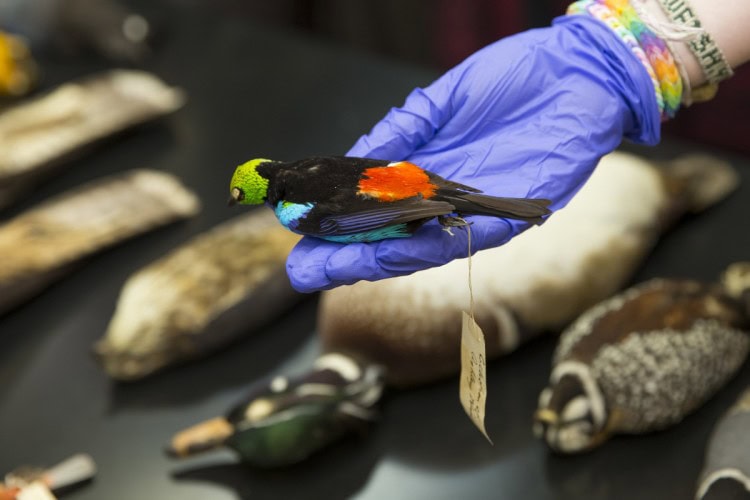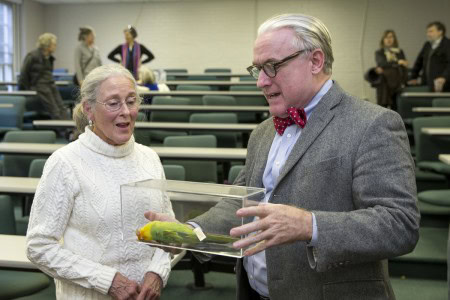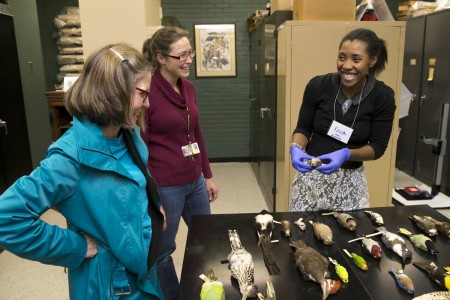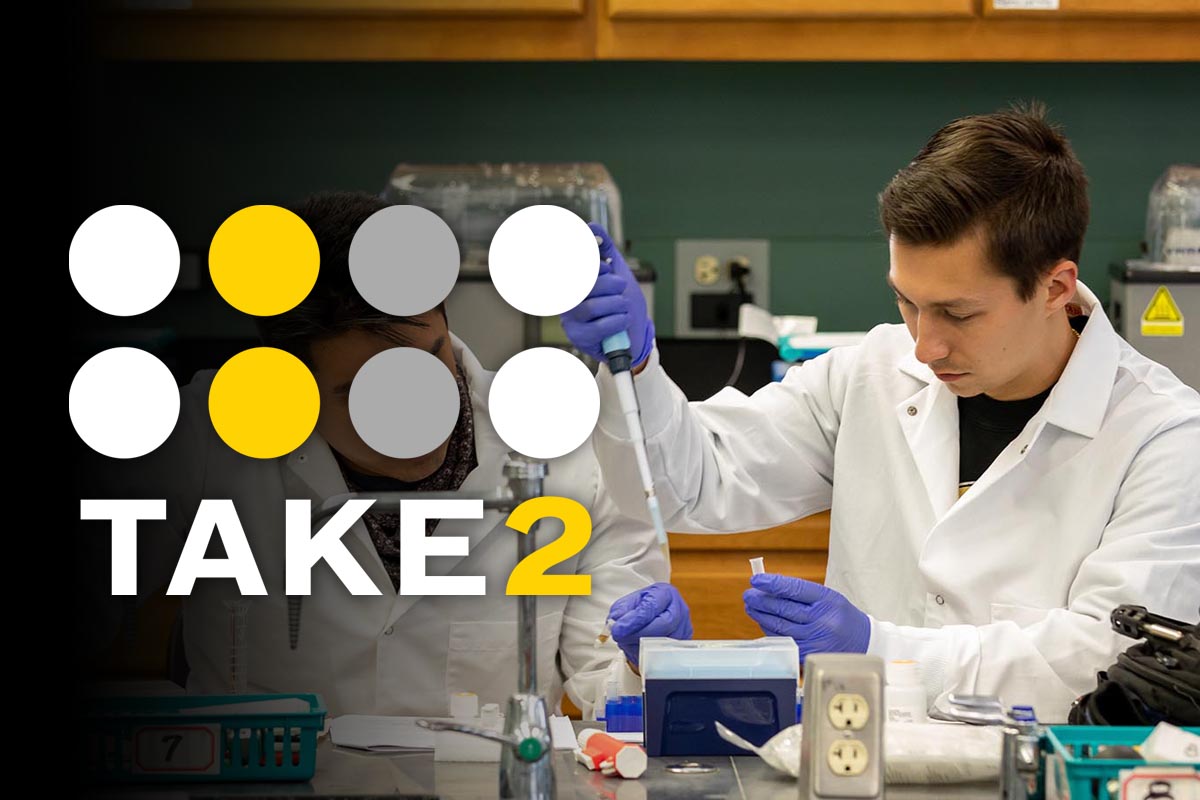Diverse bird collection donated to Randolph
The Randolph College Natural History Collections Project (NHCP) recently celebrated a recent donation of almost 300 specimens of birds, including rare and extinct species.

 Toni PIggott, of Lynchburg, gave the collection of birds to Randolph College in the summer. The collection originally belonged to her father, Walter A. Weber, a wildlife illustrator who had worked for several museums and publications, including the Field Museum of Natural History in Chicago and the National Geographic Society. Having a passion for both art and birds, he travelled the world on research trips and gathered an extensive collection of birds as reference for his illustration.
Toni PIggott, of Lynchburg, gave the collection of birds to Randolph College in the summer. The collection originally belonged to her father, Walter A. Weber, a wildlife illustrator who had worked for several museums and publications, including the Field Museum of Natural History in Chicago and the National Geographic Society. Having a passion for both art and birds, he travelled the world on research trips and gathered an extensive collection of birds as reference for his illustration.
Piggott inherited her father’s collection. She recently learned about the NHCP and visited the College several times to meet students involved with the project. She decided to donate her father’s collection so it could help educate students. “Mr. Weber was a very generous man. He was known to have given away several of his paintings and specimens to people during his time,” said Emily Smith ’12, NHCP manager. “So Ms. Piggott thinks that if her father were still alive, he would be more than willing to donate his collection and have it appreciated by more people.”
A reception was held Friday afternoon to honor Piggot and Weber for the donation of the Weber collection.
Randolph’s Natural History Collections include specimens of various birds, mammals, insects, rocks and minerals. The collections are used in many classes to help students learn about biology, evolution, and other topics.
 A group of students also work closely with the collection. Volunteers and student interns at the NHCP get first-hand experience in doing specimen preparation, categorization, and documentation. “I have gained experience with cataloging birds and, and I have learned the usefulness of building a collection as a reference for tracking the behavior and migration patterns of local and exotic species observed in the field,” said Seth Dorman ‘15, one of the NHCP interns.
A group of students also work closely with the collection. Volunteers and student interns at the NHCP get first-hand experience in doing specimen preparation, categorization, and documentation. “I have gained experience with cataloging birds and, and I have learned the usefulness of building a collection as a reference for tracking the behavior and migration patterns of local and exotic species observed in the field,” said Seth Dorman ‘15, one of the NHCP interns.
The Weber Collection is a very significant contribution. It doubles the initial size of the avian collection and diversifying its offerings
“This donation is invaluable to us,” Smith said. “It definitely adds another dimension to the current collection and increases its educational value.”
For example, the avian collection now has many more specimens of warbler, which evolve differently depending on the region where they live. “Since warbler is a good indicator of process of evolution with respect to the environment, it can be integrated into the study of evolution here at Randolph,” said Smith.
Moreover, some specimens from the Weber Collection are of rare birds, one of which, the Carolina parakeet, is already extinct. “Having the parakeet here at the collection will be a great way to teach students about conservation, as they are a vivid illustration of how humans’ activities affect other animals,” Smith explained.
Tags: biology, carolina parakeet, natural history, natural history collection
